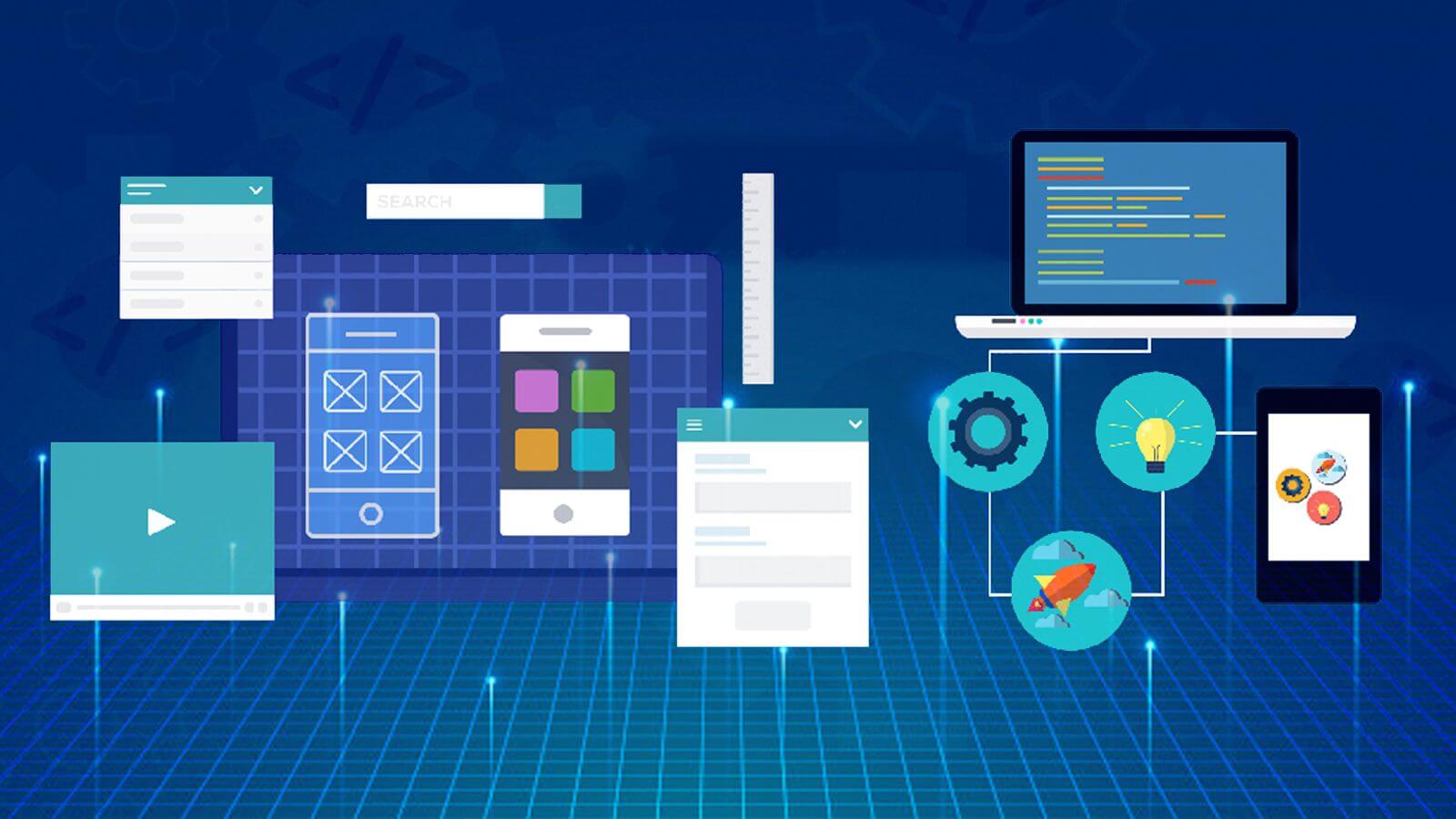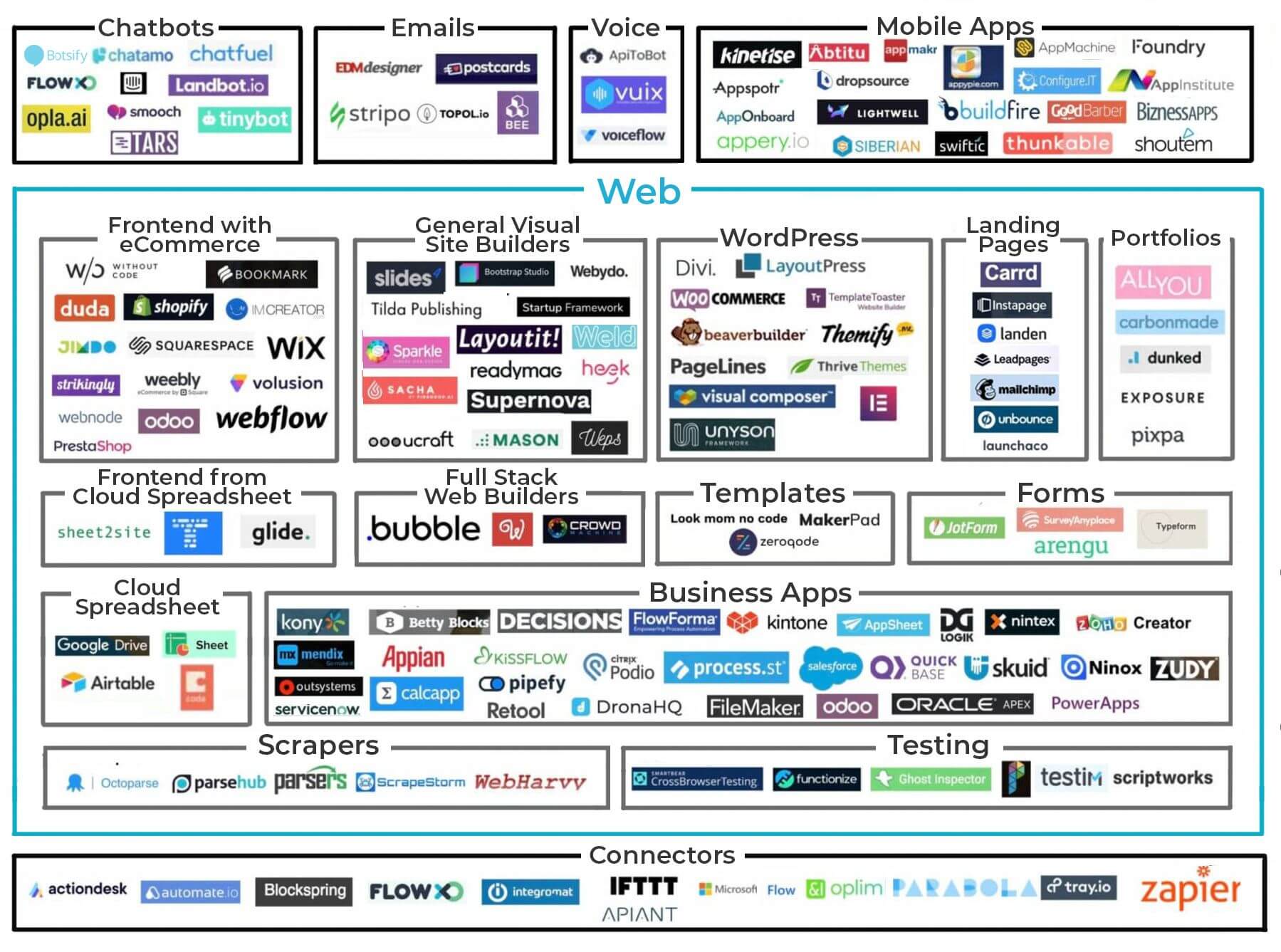
Low-code/No-code (LC/NC) software development is much more than a buzzword; it is something that challenges the definition of what software development is.
Intrigued? You should be. And today, we are going to do a crash course covering what low-code/no-code is, where it came from, its value, and why it is getting the attention of some of the biggest players in the game.
The Difference Between Low-Code & No-Code
Low-code software is essentially software that can be configured and customized with minimal (or “low”) programming efforts. To be clear, it still requires someone with programming knowledge to execute. The result is an ability to develop custom applications in hours or days, not weeks and months, and at a significant cost reduction.
On the other hand, no-code takes it one step further and empowers anyone with the ability to create and customize an application, all without any prior experience. While the two are usually clubbed together and referred to as low-code/no-code, it is the latter that is really exciting, in my opinion.
Now that we know what they are, it’s time to see where they came from.
A Brief History of Low-Code/No-Code
You may be surprised to know that early forms of LC/NC tools have been around since the ’80s and ’90s. Rapid Application Development (RADs), Computer Assisted Software Engineering (CASE) tools, and efforts like IBM’s Informix all share lineage with today’s LC/NC, but at the time, they simply couldn’t deliver on their promises.
The second wave of tools began appearing in the 2000s, with some even classifying as low, if not, no-code. Jump forward to 2016, and LC/NC is back and trending according to google, as they continue to do today.
Why Low-Code/No-Code?

The enterprise tech stack is getting more and more complex with each passing day. In an ideal world, all applications would easily integrate and come with a perfect shiny frontend. Sadly, anyone living in reality knows this not to be the case. In the real world, IT and engineering teams spend a lot of time fighting fires because of security and internal product bugs. These teams are usually already overburdened and spend 30% of their resources building and maintaining internal tools, further reducing productivity and increasing technical debt.
According to Salesforce, seventy-two percent of IT leaders now say project backlogs prevent them from working on strategic projects. This problem is not one that can be solved by hiring either, because as most know, the demand for technical talent far exceeds the supply. This is further compounded by the aforementioned firefighting, as business teams keep adding third-party tools to increase their agility.
Standard software development processes are dependent on highly-skilled, costly, and time-intensive technical resources. The communication between the business team and technical teams is often fragmented, resulting in longer user acceptance cycles, increased costs, and time-to-market. And after all that time, effort, and money, your software might still end up with bugs. Low-code/no-code tools can solve all these problems.
Low-Code/No-Code App Development Platforms
LC/NC application development platforms can vary from tool to tool, but for the most part, you will typically find these components common amongst them:
- Interface Designer: An interface designer is used to design the app’s entry forms or screens. The interface designer typically adds fields, text, and other layout elements to app screens or forms.
- Workflow Designer: A workflow designer is used to implement business logic and workflow. For example, if building a submission form, the workflow designer would be used to define where the form should go after submission.
- Common Database: An integrated database contains the data tables that store the data to be created, retrieved, and updated through the app.
- Connectors: Connectors (sometimes referred to as spokes, webhooks, or interfaces) allow you to connect your app to other third-party apps or services easily. Connectors allow you to automate workflows and tasks across many apps and services from within the context of your app by exposing app data or services, or by retrieving, consuming, or updating data from other apps and invoking their services.

Growing & Getting Noticed
LC/NC is rapidly growing in popularity, partially thanks to websites such as nocodedev.com and nocode.tech which provide a variety of platforms for creating LC/NC mobile and web applications. It’s also garnered the attention of some big names who are opting to join in rather than sitting on the sidelines.
Google announced in Jan 2020 that it is buying AppSheet, an eight-year-old no-code mobile-application-building platform. The company had raised more than $17 million on a $60 million valuation, according to PitchBook data.
In late June 2020, Amazon announced its launching the beta version of Honeycode, an LC/NC app building platform. The entry of such large names in the space proves there is room, a need, and desire for an LC/NC platform, and this trend could just shape the future of development.
The Future of Low-Code/No-Code
The current ongoing pandemic has forced enterprises in every industry, public and private, to re-assess and reconsider low-code/no-code platforms, adopting them at a rapid pace. Since these organizations are looking to spend less and build-out services faster, these platforms have become the obvious answer.
Gartner forecasts that low-code application platforms will account for 65 percent of all app development by 2024. This means most apps created in 2024 will be developed using platforms and tools that provide turnkey ways to program. Apps potentially developed by men and women who can’t write a single line of code.
The low-code market will top $21 billion in spending by 2022 says,Forrester. That’s a huge number and opportunity. Investors would be wise to support the existing players who can shift rapidly to this newmodel, even when it means giving up short-term services revenue for longer-term competitive advantage. Startups that help build out the industry’s new low and no-code application platforms will also rise, like the design app Canva, valued at $3.2 billion.
Take away
With the rise of APIs, improved connectivity, growing cloud popularity, and software purchasing and deployment becoming easier, no-code/low-code development platforms have the potential to accelerate enterprise innovation by reducing the need for technical skills and resources. And while LC/NC is already causing a lot of excitement, I think we are still a little while off before we start to see the significant and successful rise of Citizen Developers, but it might not be as long as you think.



